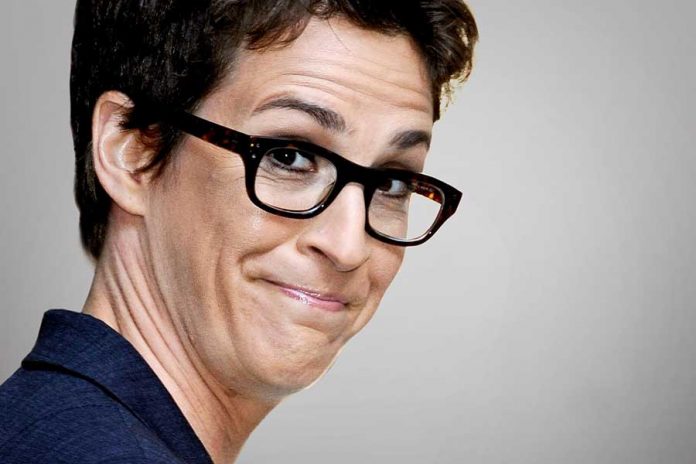Out MSNBC anchor Rachel Maddow has become a trusted (and famous) political pundit because of her ability to clearly “explain stuff.”
She has developed a large and devout fanbase for her reasoned approach to politics. Maddow once said in an interview, “I’m the liberal [that] conservatives like, which is very unsettling.”
In the new biography, “Rachel Maddow,” by Lisa Rogak, the life of eponymous talk show host is presented in a fawning, celebratory fashion. The quotes in the book (like the one above) are compiled by the author from various articles, as well as TV and radio interviews, and assembled into a cohesive narrative. That approach does not do Maddow’s story a disservice — Rogak creates a compelling biography — but it does mean the filtering of Maddow’s life through multiple sources over the years.
Rogak traces the star’s life from her youth to her success. She positions Maddow as an unapologetic outsider and underdog. The author nicely recounts Maddow’s childhood, growing up in Castro Valley, a conservative pocket in the Bay Area. She was inspired by “Schoolhouse Rock” (the “I’m Just a Bill” number in particular) and developed sharp debating skills. She was a punk and a jock at different times. She came to terms with her sexuality at a young age. She has also long wrestled with cyclical depression.
There are a handful of telling moments in these early, formative years, as when Maddow gave a “risky” graduation speech that showed her interest in being a provocateuse. She attended Stanford and came out in an interesting way. (Best for those who don’t know to discover). She won both a Rhodes and a Marshall Scholarship (and took the Rhodes, which moved her to England). She was active in ACT UP and worked with AIDS- and HIV-related organizations. Her thesis was entitled, “HIV/AIDS Health Care Reform in British and American Prisons.”
In 1999, Maddow got her first gig in radio at a local station in Holyoke, Massachusetts. It led to her hosting “Big Breakfast,” a radio show on a Northampton, Massachusetts station before she was able to springboard to Air America when in 2004, it was a new, liberal radio station. Maddow adapted to Air America and rode out the station’s efforts to get funding and off the ground, but the experience shaped her and showcased her abilities as a host. It was her strengths as a journalist — one who is principled and has a strong work ethic — that helped her get her own show. She worked both her Air America gig and her MSNBC program simultaneously for a while but couldn’t keep up that pace.
“Rachel Maddow” certainly satisfies readers who want a blow-by-blow account of how Maddow rose to her current state of fame. Rogak dedicates much of the book to how the TV host prepares for her show and the efforts that go into doing an hour of news, five times a week, 50 weeks a year. Maddow spends up to nine hours a day producing six segments for her show. The toll that takes on her health is recounted, and Maddow admits to being bad at managing her time. Perhaps the best chapter is a fascinating behind-the-scenes look at the show and how it comes together. Rogak actually might have opened with this section; it provides a nice overview of the anchor’s work.
This biography is not critical, and at times it’s repetitive, but it does feature some compelling moments — notably the ones that address its subject’s personal life. (Maddow is intensely private, which is why the non-work details are fun). For example, Maddow’s first date with Susan Mikula, her partner of 20+ years, was not the typical dinner and a movie; they went to a gun club. Her hobby is mixing classic cocktails; her favorite sport is fishing, and she likes a good fart joke. She proudly co-created one of The New York Times’ crossword puzzles. Maddow also has a penchant for wearing sneakers and jeans behind her anchor desk because she is far more comfortable in men’s clothing.
Maddow’s thoughts about coming out, politics, television and media are peppered throughout the book, but “Rachel Maddow” often lacks critical examples of the anchor’s distinctive style of journalism. Rogak briefly touches on topics such as the Flint water crisis, to show how Maddow addresses a hot-button issue, and there are a few observations on the changing news cycle. Still, overall, the book is not about explaining the issues or Maddow’s take on them, which is a good thing.
Even Maddow’s first book, “Drift,” about American military power, or her Emmy-winning work reporting in Afghanistan are only briefly discussed. Readers wanting more depth might feel shortchanged, but “Rachel Maddow” is an affectionate portrait of its subject.
